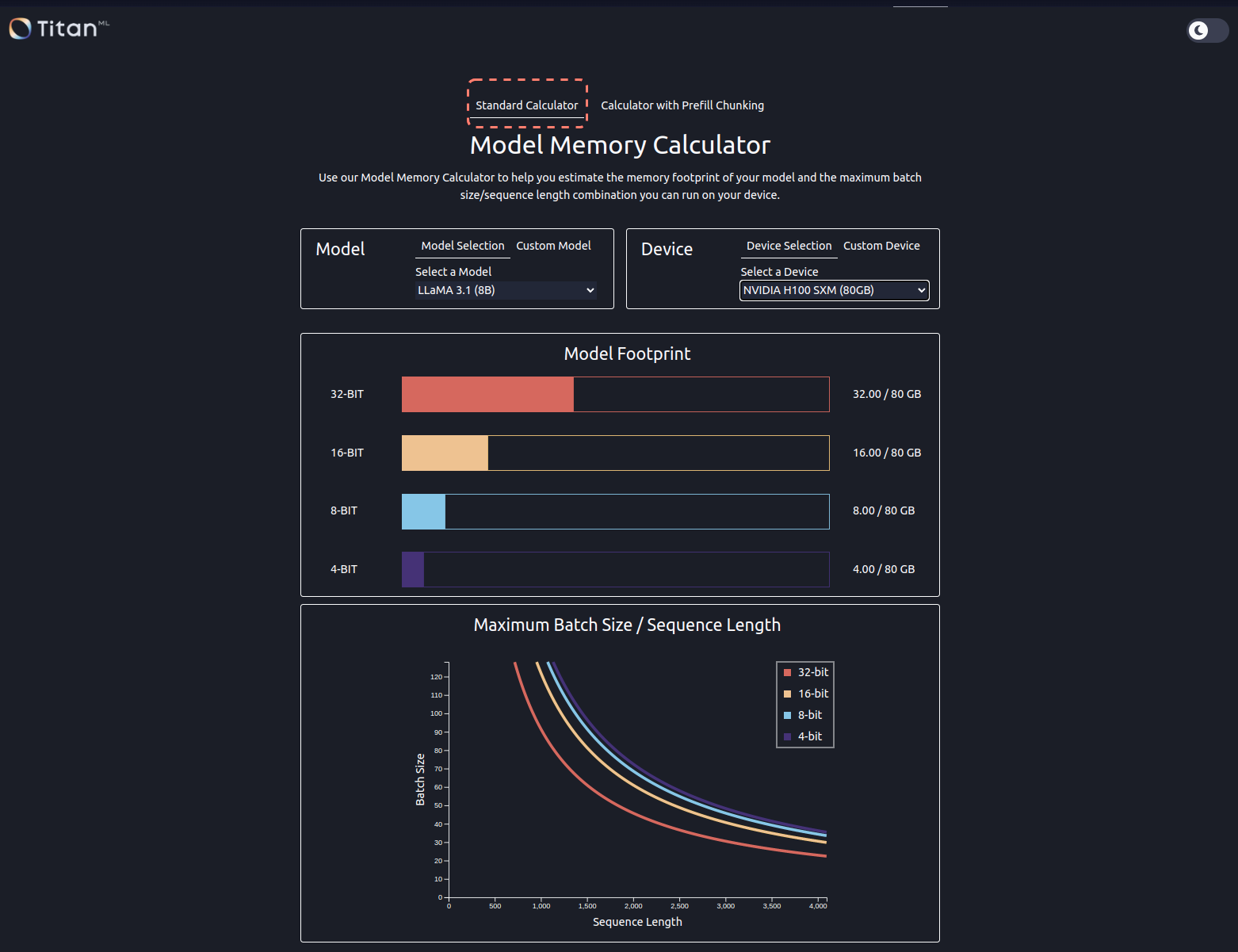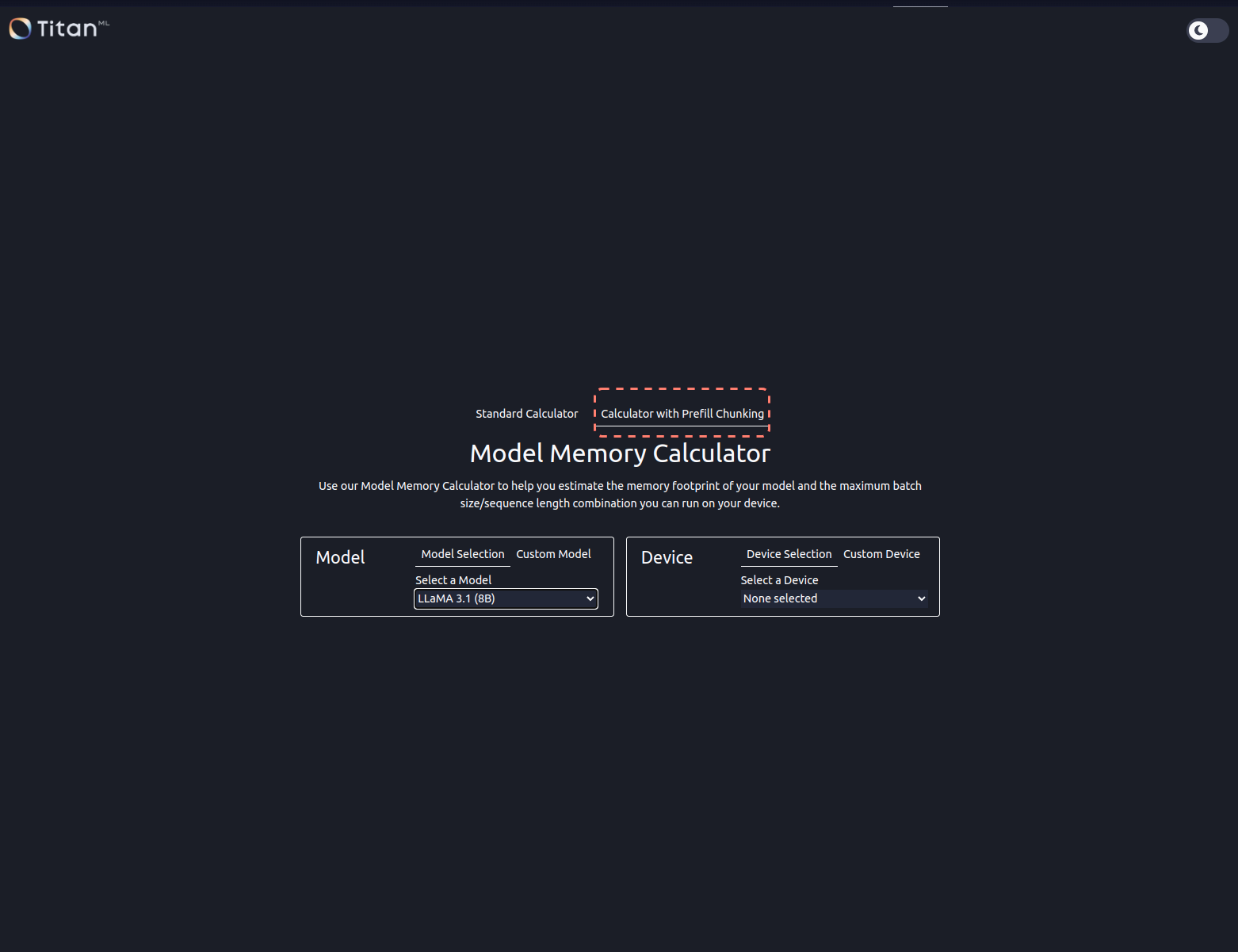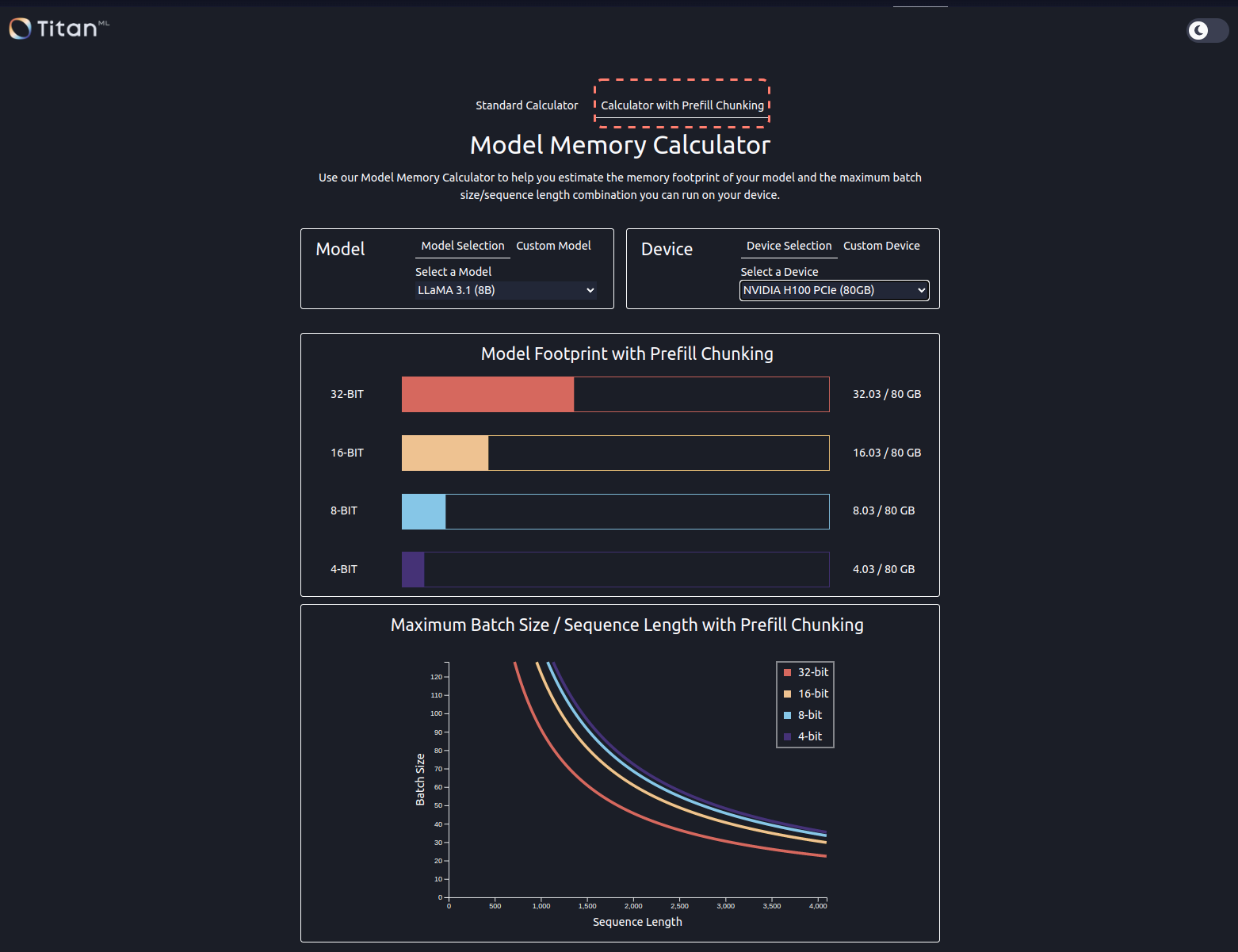Model Memory Calculator
Overview
The TitanML Model Memory Calculator is an open-source tool that helps users determine whether their machine learning model can run on their available hardware. The tool supports two modes: a Standard Calculator and a more advanced Prefill Chunking Calculator. This document outlines the functionalities of both calculators, explains the underlying formulas, and demonstrates how to use them effectively.
You can also access the Model Memory Calculator directly on Hugging Face or on GitHub Pages.
Purpose of the Tool
This tool serves several purposes:
- Memory Management: Assists users in managing memory requirements efficiently to prevent out-of-memory errors.
- Optimization: Helps in optimizing batch sizes, model configurations, and deployment strategies based on hardware capabilities.
- Cost Management: Reduces cloud computing costs by optimizing hardware and model configurations.
The calculator caters to a wide range of users, including those who want to ensure that their current hardware supports a specific machine learning model and those looking to purchase hardware that meets their model requirements.
1. Standard Calculator
Introduction
The Standard Calculator allows users to estimate the memory footprint of their machine learning model based on key variables such as the number of model parameters, hidden size, number of layers, and hardware constraints. This basic estimation helps users gauge if their hardware can support the model.
Key Formulas
-
Model Memory Needed:
The memory required to store model parameters depends on the precision used. -
Available Memory:
The memory remaining after accounting for the model's memory usage. -
Model Memory Per Input:
Calculated based on the model’s hidden size and the number of layers. -
Maximum Input Size:
Determines the maximum input size the device can handle without exceeding memory limits.
Usage Scenarios
- Optimizing Batch Size: Using the standard calculator, users can understand the maximum input size and adjust their batch sizes accordingly.
- Deployment Planning: For inference tasks, the standard calculator allows users to plan deployments on resource-constrained devices by estimating the memory footprint.


2. Prefill Chunking Calculator
Introduction
The Prefill Chunking Calculator is designed for advanced memory optimization. It provides insights into memory usage during the activation of large models. This mode is particularly useful when models require chunked prefill during inference, which minimizes memory usage by breaking down large inputs into smaller chunks.
Key Formulas
-
Activations Memory:
This formula calculates the memory needed for activations during chunked prefill. -
Valid Memory:
Determines if the available memory can handle the prefill chunking process.
Usage Scenarios
- Chunking for Large Models: For models with large memory footprints, chunking is essential to break down the input into manageable sizes.
- Memory Efficiency: By using the Prefill Chunking Calculator, users can optimize model inference on devices with limited memory by adjusting chunk sizes.


Conclusion
The TitanML Model Memory Calculator is an indispensable tool for any machine learning practitioner working with memory-constrained hardware. By providing both standard and advanced memory calculations, it enables users to optimize model performance, plan deployments efficiently, and manage memory resources cost-effectively.
- Access the Model Memory Calculator on Hugging Face or on GitHub Pages.
Whether you are an experienced practitioner or someone looking to explore machine learning deployment, the TitanML Model Memory Calculator offers an intuitive and reliable solution to your memory estimation needs.